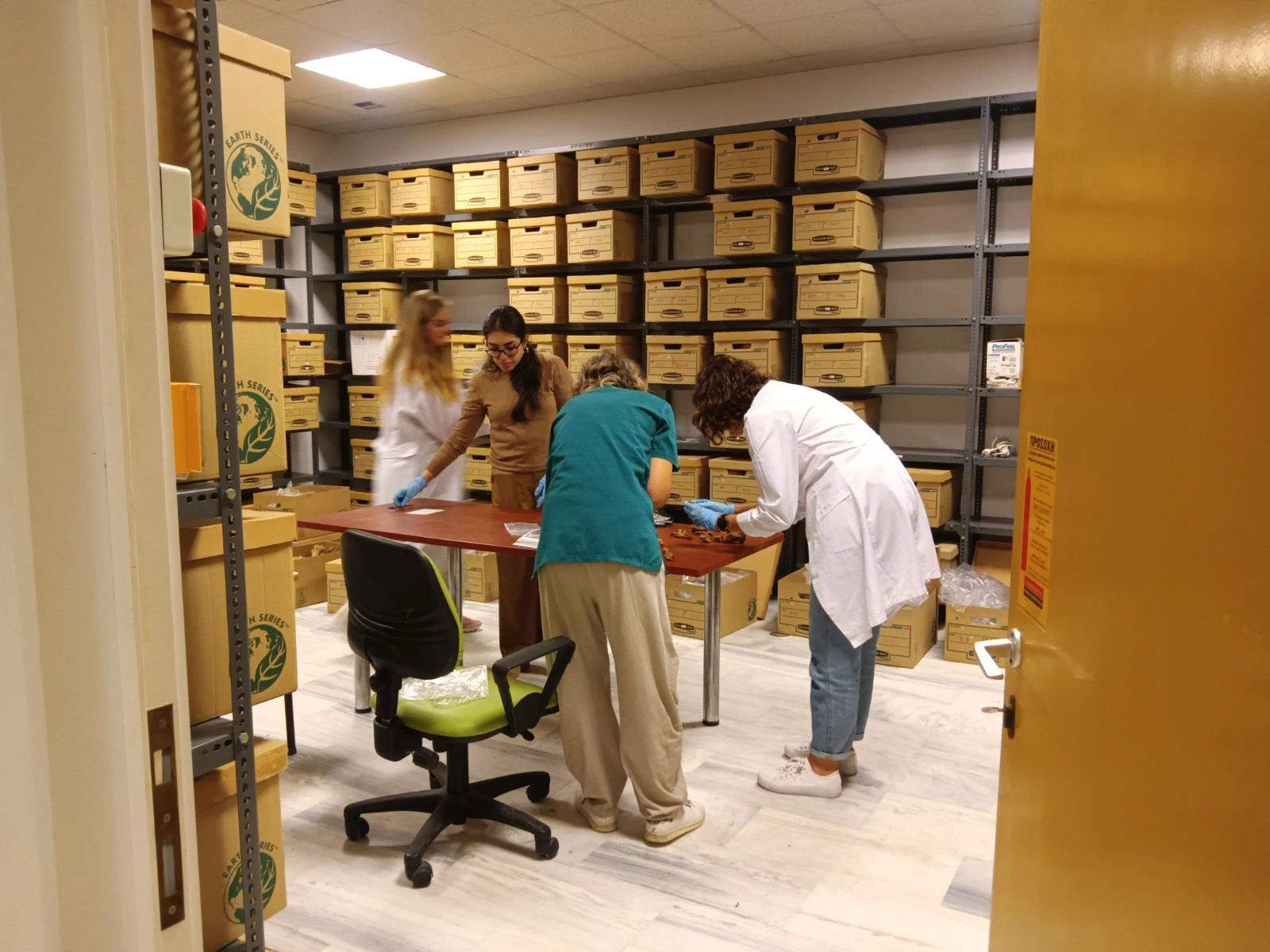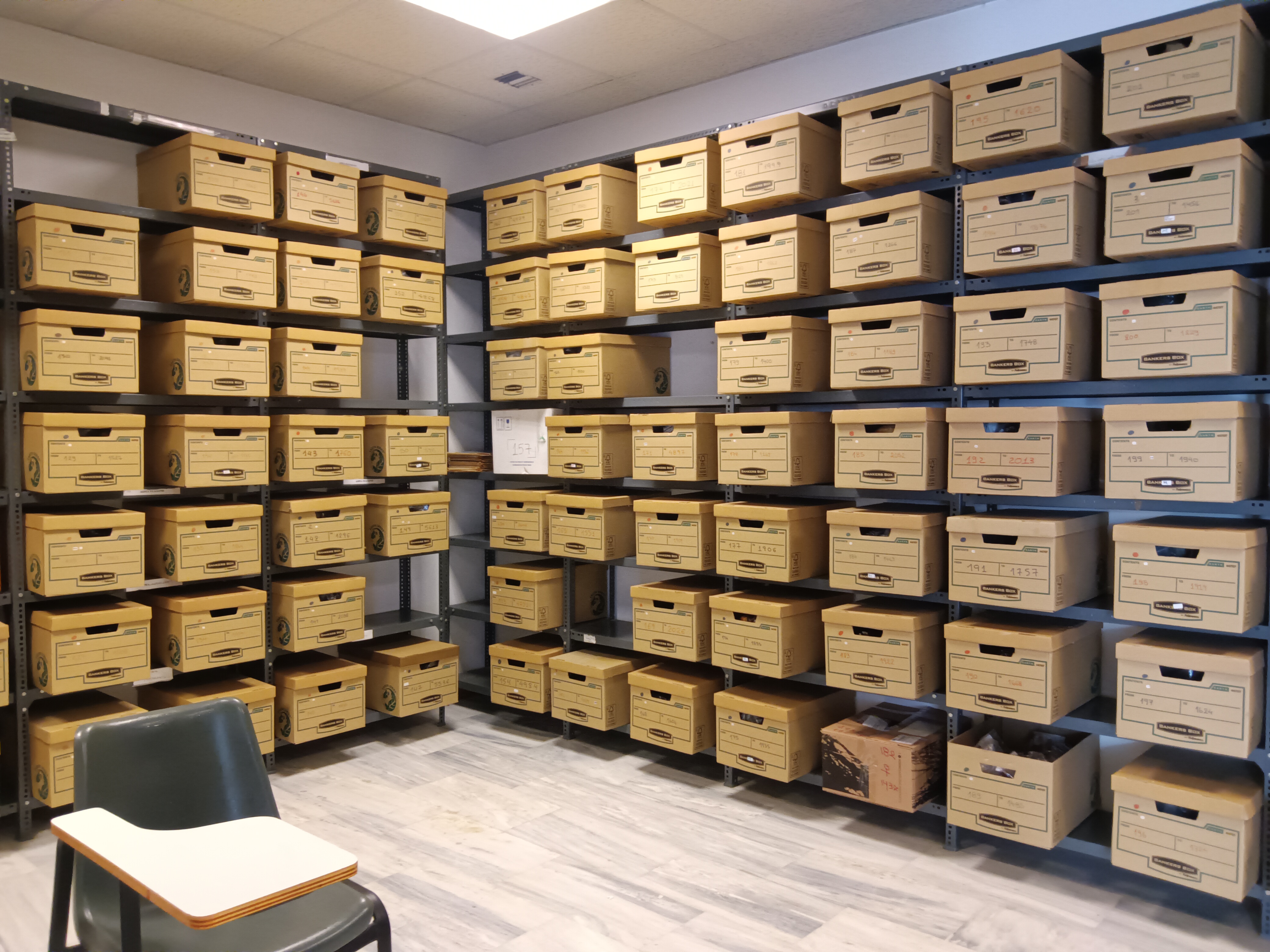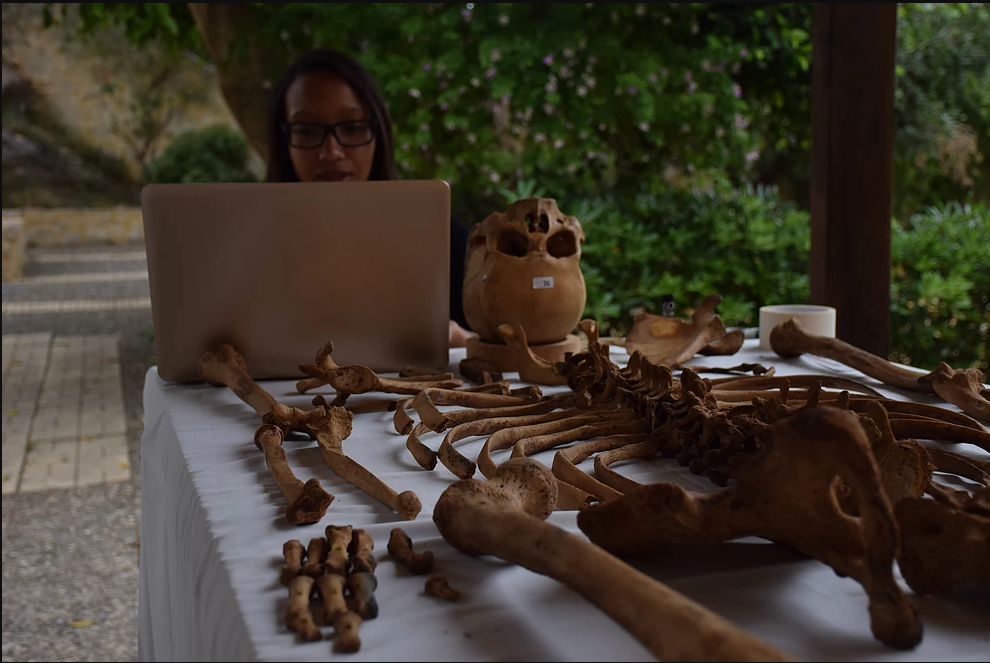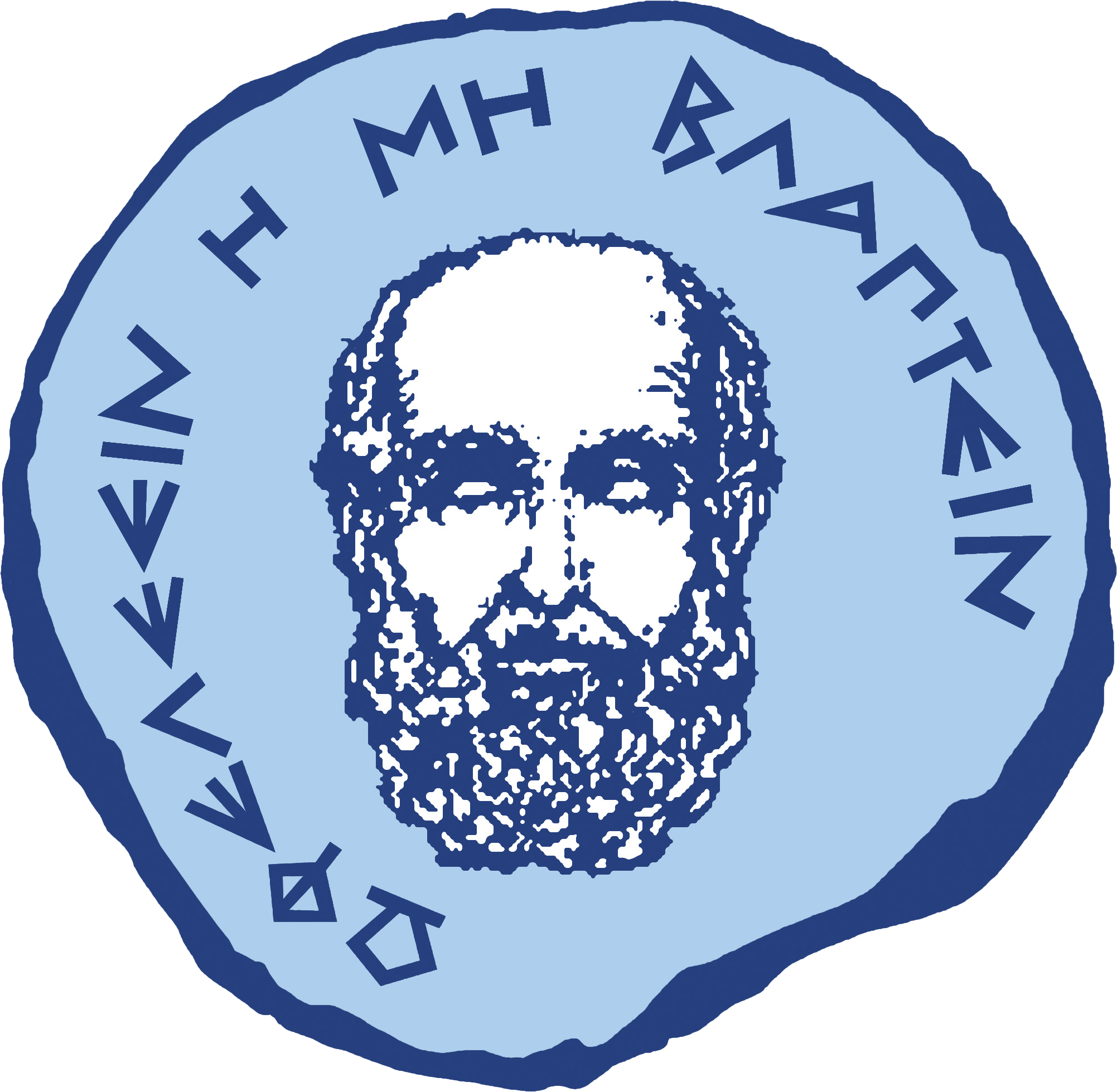news
26 Sept - 1 Oct 2022
the FMU hosts the FASE Basic Course and Symposium for the European Forensic Anthropology Society
28 September 2019
the Unit of forensics organizes th 2nd Forensic Medicine Conference
the FMU hosts the FASE Basic Course and Symposium for the European Forensic Anthropology Society
28 September 2019
the Unit of forensics organizes th 2nd Forensic Medicine Conference
Research / The Cretan collection
The Cretan collection is a contemporary osteological collection housed in Heraklion, Crete. It comprises 200 skeletons selected from the cemeteries of St. Konstantinos and Pateles, Heraklion, Crete. The bones are gathered, cleaned and placed in boxes and stored in a special room all together or in family tombs if exists. Unless living members of a deceased person can afford to keep them in the grave with a “rental fee” it is to be inhumed in a designated area by the city. Current Director of the collection (E. Kranioti) was given permission by the local District Attorney according to standard procedure, to create a skeletal collection known as the Cretan collection for developing standards for modern Greeks. The collection is stored at the Forensic Pathology department of the ministry of Justice.



The collection includes individuals that died between 1968 and 1998. In addition it includes 21 individuals that migrated from Turkey, the Greek islands and mainland Greece. Demographic information is available for 145 individuals from archives of the Census office. Death Certificates are available for 77 cases. Sex is available for all cases from the ossuary boxes and has been confirmed with osteological analysis. The collection comprises of almost equal rate of males and females. Age ranges from 19 to 101 y.o. with meane age for males 69+/-13.52 y.o. and for females 73+/-16.9 y.o.

The collection is housed at the Forensic Anthropology Lab, School of Medicine, University of Crete in Heraklion under the curation of E. Kranioti. About 70% of it has been fully recorded. In addition it has been used in many research projects, as reference collection in forensic cases and for educational purposes such as the Cretan fieldschool in Forensic Anthropology, held in Heraklion since 2015.

Publications
2019, The posterior portion of the ilium as sex indicator: a validation study. Bonczarowska JH, Bonicelli A, Papadomanolakis A, Kranioti EF. Forensic Science International 294:216.e1-216.e6.
2018, An evaluation of Bayesian age estimation using the auricular surface in modern Greek material. Nikita E, Xanthopoulou P, Kranioti EF. Forensic Science International 4; 291, pp 1-11
2018, Ancestry estimation based on cranial measurements: a custom made approach. Kranioti EF, Garcia-Donas JG, Ozgur Can I, Ekizoglu O. Forensic Science International 286, pp. 265.e1-265.e8
2017, The auricular surface as age indicator in a modern Greek sample: a test of two qualitative methods. Michopoulou E., Negre P., Nikita E., Kranioti EF. Forensic Science International 280, pp. 246.e1-246.e7
2017, Sexual dimorphism of the calcaneus in contemporary Cretans. Nathena D, Michopoulou E, Kranioti EF. Forensic Science International 2017; 277:260.e1-260.e8.
doi: http://dx.doi.org/10.1016/j.forsciint.2017.04.005
2017, Accuracy and reliability of southern European standards for the tibia: a test of two Mediterranean populations. García-Donas JG, Ekizoglu O, Er A, Bozdag M, Akcaoglu M; Can I, Kranioti EF. Forensic Science and Criminology 2017;2(1):3-5. doi: 10.15761/FSC.1000107
2017, Sex estimation of the Tibia in Greek-Cypriots and Cretans: forensic applications. Kranioti EF, Langstaff H, García-Donas J, Almeida Prado PS. Forensic Science International 2017; 129.e1–129.e7
2015, Sexual dimorphism of the metacarpals in contemporary Cretans: Are there differences with mainland Greeks? Nathena D, Gambaro L, Tzanakis N, Michalodimitrakis M, Kranioti EF. Forensic Sci Int 2015;257:515.e1–515.e8
2015, Estimation of Sex from the Upper Limb in Modern Cretans with the Aid of ROC-Analysis: A Technical Report. Kranioti EF, Tzanakis N.Forensic Research and Criminology International Journal 1(2):00008
2014, Sex estimation of the Greek mandible with the aid of discriminant function analysis and posterior probabilities. Kranioti EF, García-Donas JG, Langstaff H. Rom J Leg Med 2014: 22(2)101-104
2012, Sexual dimorphism of the scapula and the clavicle in modern Greeks. Papaioannou V, Joveneaux P, Nathena D, Kranioti EF, Michalodimitrakis M. Forensic Sci Int 2012 Apr 10;217(1-3):231.e1-7. doi: 10.1016/j.forsciint.2011.11.010.
2011, Sex estimation of the Cretan humerus: A digital radiometric study. Kranioti EF, Nathena D, Michalodimitrakis M. International Journal of Legal Medicine 2011 Sep;125(5):659-67
2009, Dimorfismo sexual de cráneo en la población actual de Creta. Kranioti EF, García-Vargas S, Michalodimitrakis M. Boletín Galego de Medicina Legal e Forense (16):37-43 (Article in Spanish).
2009, Sex identification and software development using femoral radiographs. Kranioti EF; Vorniotakis N; Galiatsou C; İşcan MY; Michalodimitrakis M. Forensic Sci Int 2009; 189(1-3):113.e1-7
2009, The application of geometric-morphometrics in sex identification of the humerus for forensic purposes. Kranioti EF, Bastir M, Sánchez-Meseguer A, Rosas A. Forensic Sci Int. 189(1-3):111.e1-8.
2009, Sexual dimorphism of the humerus in contemporary Cretans. Kranioti EF, Michalodimitrakis M. J Forensic Sci 2009:54(5):996-1000.
2008, Craniometric analysis of the modern Cretans. Kranioti EF, İşcan MY, Michalodimitrakis M. Forensic Sci Int 180 (2-3):110.e1-5.




